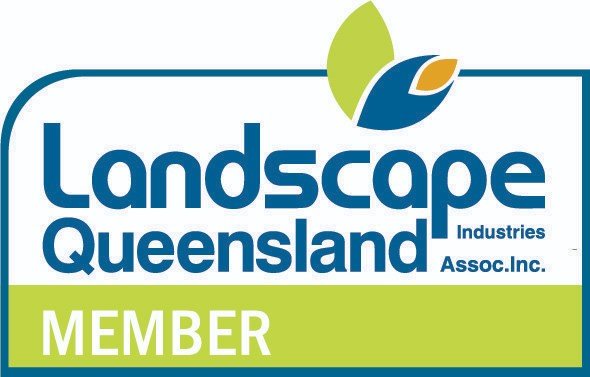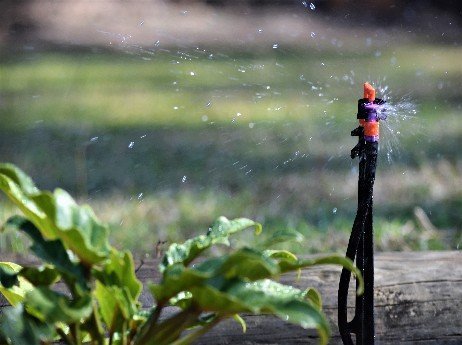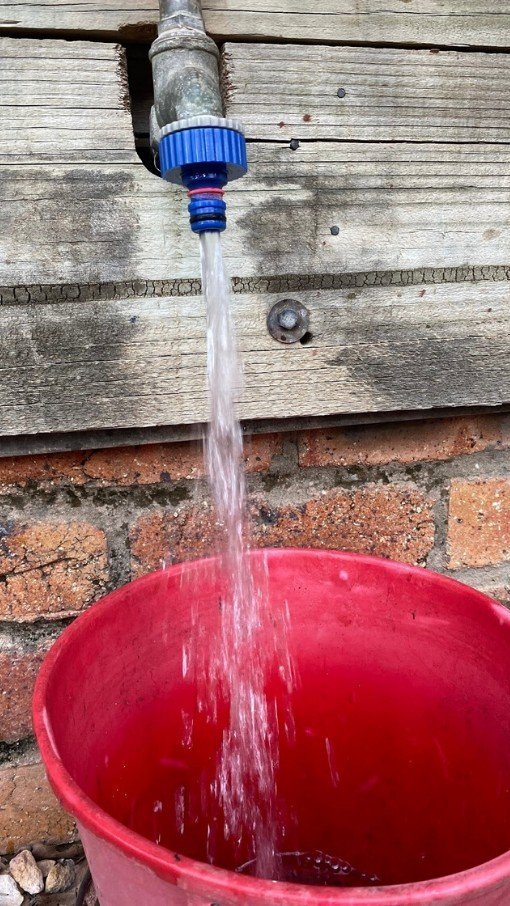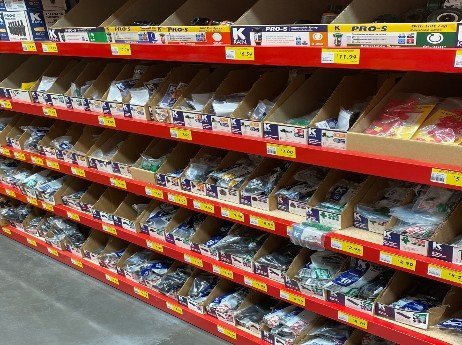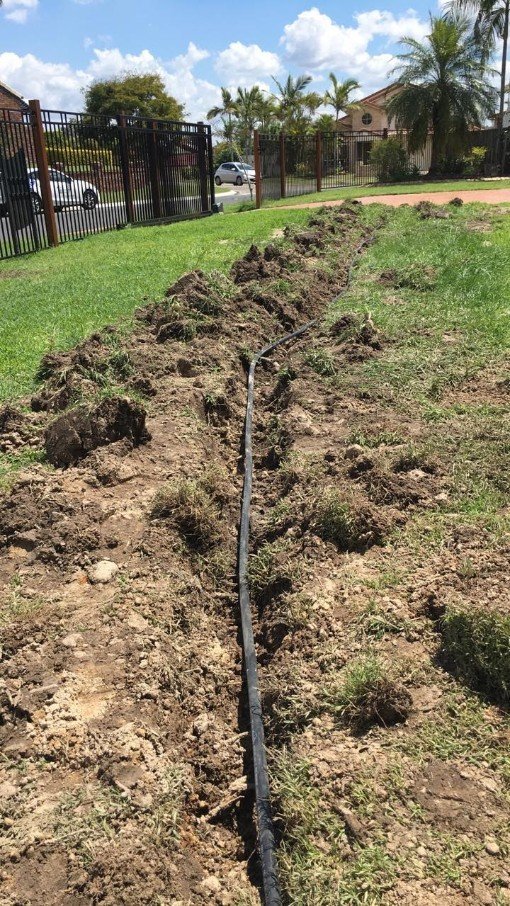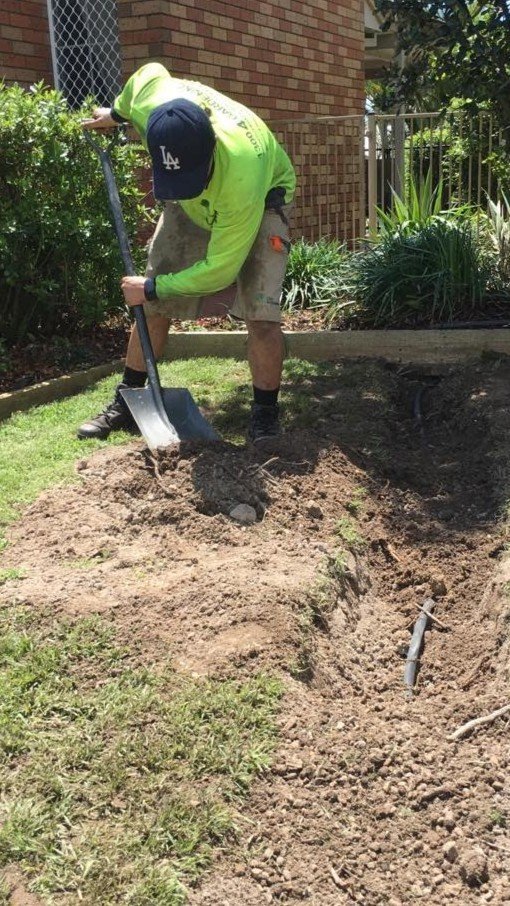Landscape Irrigation
What is irrigation?
Irrigation is the means of providing your plants, gardens and lawns with water using a delivery method, which will assist in growth. There are many forms of irrigation available for domestic house-hold, commercial, sports fields, farming etc. For each of these applications, different forms of irrigation are used.
There are also irrigation options for those who are conscious of their water usage and would like to save water, but still provide their landscape with the water it needs.
Show More
There are many forms of irrigation available for domestic house-hold, commercial, sports fields, farming etc. For each of these applications, different forms of irrigation are used.
There are also irrigation options for those who are conscious of their water usage and would like to save water, but still provide their landscape with the water it needs.
Why do I need irrigation?
Just like the human body, your plants and lawn require water to survive. Even more so, they need regular watering so they can function to their full potential. Your living landscape uses water to manufacture their own food source and also as a way to keep cool. Without these processes taking place, your plants and lawn could die. Or at the very least, they can never flourish to their full potential.
Irrigation is a very important thing and can save you time having to hand water multiple times per week.
Show More
Your living landscape uses water to manufacture their own food source and also as a way to keep cool. Without these processes taking place, your plants and lawn could die. Or at the very least, they can never flourish to their full potential.
Irrigation is a very important thing and can save you time having to hand water multiple times per week.
How do I get time back using irrigation?
Most forms of irrigation use an automated timer of sorts to ensure regular watering cycles are met, meaning there is very little to do once this is set up. This means you will never have to hand water again! Most automated timers coupled with a rain sensor have the ability to adjust the watering needs to suit, depending on the amount of rain received. Using such automations make it much easier to adhere to council watering days and times, if you have restrictions in your area.
These set ups can be a true ‘Set and Forget’ system with basic maintenance checks required periodically and minor seasonal adjustments as needed.
Irrigation is a very important thing and can save you time having to hand water multiple times per week.
Show More
This means you will never have to hand water again! Most automated timers coupled with a rain sensor have the ability to adjust the watering needs to suit, depending on the amount of rain received. Using such automations make it much easier to adhere to council watering days and times, if you have restrictions in your area.
These set ups can be a true ‘Set and Forget’ system with basic maintenance checks required periodically and minor seasonal adjustments as needed.
Irrigation is a very important thing and can save you time having to hand water multiple times per week.
What is the best irrigation system for my landscape?
To determine the best irrigation system for your landscape, there are a few basics that need to be considered:
- Size of the area needing to be irrigated
- Amount of water required by your landscape
- Amount of water pressure available
- Soil type
- Water conservation
- Climate
- Type and frequency of automation required (if any)
How do I set up a new irrigation system?
Once you have determined the type of irrigation that you will require, it is time to start planning!
An irrigation plan is developed to work out the best way to deliver water to each area of your landscape. This can be done by considering these factors – water pressure, output of each irrigation method (ie: pop up sprinklers, micro spray heads, drip systems etc), the area needing to be covered and the distance required to get to each area requiring water.
In most cases, multiple stations are required to be set up due to available water pressure. In this instance, you will need to select an automated timer that will allow control of the amount of stations needed. A ‘station’ is a term for splitting the irrigated areas into different zones that will be irrigated at different times, requiring less water pressure. You will need to ensure adequate coverage is met. This may require certain sprinklers to overlap their spread in areas.
Show More
An irrigation plan is developed to work out the best way to deliver water to each area of your landscape. This can be done by considering these factors – water pressure, output of each irrigation method (ie: pop up sprinklers, micro spray heads, drip systems etc), the area needing to be covered and the distance required to get to each area requiring water.
In most cases, multiple stations are required to be set up due to available water pressure. In this instance, you will need to select an automated timer that will allow control of the amount of stations needed. A ‘station’ is a term for splitting the irrigated areas into different zones that will be irrigated at different times, requiring less water pressure. You will need to ensure adequate coverage is met. This may require certain sprinklers to overlap their spread in areas.
There is an element of mathematics required for this process and a lot of people generally outsource this step to an irrigation professional. Although, with a little research you can find many resources online that can help you to understand this process.
If you need any assistance with the planning and selection required for your property, please do not hesitate to contact us at 1300 4 Gardening. We have a range of irrigation professionals on hand that will make this process easier for you!
Show More
Although, with a little research you can find many resources online that can help you to understand this process.
If you need any assistance with the planning and selection required for your property, please do not hesitate to contact us at 1300 4 Gardening. We have a range of irrigation professionals on hand that will make this process easier for you!
Installing your new irrigation system
Now that you have your irrigation supplies plan, it is time to head down to your local irrigation supplier. In most instances, they will be able to assist you by providing all the parts required for the job, using your plan. If you are confident in your needs, there is also the option to pick your own parts from their selection.
Some of the most common parts include; sprinklers, poly pipe, drip tube, pipe joiners, joiner clips, automated timers, solenoid valves, solenoid wire, stakes etc.
Most forms of irrigation require basic specialised tools to complete your installation. Ensure that you consult with your irrigation supplier on the tools that you will require for your specific assembly. To accompany all of this, you will require some digging tools as well. Generally, a mattock and spade (or posthole shovel) will suffice.
Show More
If you are confident in your needs, there is also the option to pick your own parts from their selection.
Some of the most common parts include; sprinklers, poly pipe, drip tube, pipe joiners, joiner clips, automated timers, solenoid valves, solenoid wire, stakes etc.
Most forms of irrigation require basic specialised tools to complete your installation. Ensure that you consult with your supplier on the tools that you will require for your specific assembly. To accompany all of this, you will require some digging tools as well. Generally, a mattock and spade (or posthole shovel) will suffice.
Time to start following your irrigation plan.
Begin by installing your automated timer (if you are using one) in the most appropriate location. Ascertain where you will be placing your solenoid valve(s). Once this is done, you can start digging the trenches as outlined in your plan. Try to maintain a consistent depth throughout and avoid any sharp turns/corners where possible to prevent kinking of the feeder pipe when it is installed to the trench.
Now the hard work is done, it is time to start assembling your system.
Connecting all your pipe work, sprinklers and solenoid valves will come together quickly. You need to be careful that you do not miss any clips/clamps. These are required for every join and will result in an underground ‘break’ that will require digging up and fixing down the track if they are not installed.
Next, It’s time to wire your solenoid valves to the controller. These wires can be buried as required upon completion, for a more seamless finish.
Before back-filling your trenches, you will need to test your system!
Time to start following your irrigation plan.
Begin by installing your automated timer (if you are using one) in the most appropriate location. Ascertain where you will be placing your solenoid valve(s). Once this is done, you can start digging the trenches as outlined in your plan. Try to maintain a consistent depth throughout and avoid any sharp turns/corners where possible to prevent kinking of the feeder pipe when it is installed to the trench.
Now the hard work is done, it is time to start assembling your system.
Connecting all your pipe work, sprinklers and solenoid valves will come together quickly. You need to be careful that you do not miss any clips/clamps. These are required for every join and will result in an underground ‘break’ that will require digging up and fixing down the track if they are not installed.
Next, It’s time to wire your solenoid valves to the controller. These wires can be buried as required upon completion, for a more seamless finish.
Before back-filling your trenches, you will need to test your system!
Test your system in accordance with the user manual provided with your automated timer. Providing all works as it should, you can now set the watering program on your timer. Please consult the user manual for these adjustments.
Flush the system to rid it of any dirt or debris that could cause blockages in your sprinkler heads etc.
Now you can back fill your trenches!
Here are a few key tips when performing your installation:
- Do not let your piping get kinked; adjust your trenches if required.
- Make sure all clips/clamps are tight.
- Backfill all piping and underground sprinklers tightly so they have as much support by the surrounding soil as possible. This will aid in eliminating breaks to joins and clip failure over time.
- Avoid dirt and debris getting into your pipe-work and sprinklers.
- Ensure pop up sprinkler heights are adequate – not too high, not too low.
- Do not back fill your trenches until your system has been tested!
Show More
Providing all works as it should, you can now set the watering program on your timer. Please consult the user manual for these adjustments.
Flush the system to rid it of any dirt or debris that could cause blockages in your sprinkler heads etc.
Now you can back fill your trenches!
Here are a few key tips when performing your installation:
- Do not let your piping get kinked; adjust your trenches if required.
- Make sure all clips/clamps are tight.
- Backfill all piping and underground sprinklers tightly so they have as much support by the surrounding soil as possible. This will aid in eliminating breaks to joins and clip failure over time.
- Avoid dirt and debris getting into your pipe-work and sprinklers.
- Ensure pop up sprinkler heights are adequate – not too high, not too low.
- Do not back fill your trenches until your system has been tested!
Maintaining and checking your irrigation system
We recommend that every 3 months an irrigation health check or audit is conducted to keep your system in great shape.
This can easily be done by:
- Running each station manually to identify any faults or leaks
- Cleaning out pop up sprinklers
- Unblocking any blocked spray heads
- Flushing out the system
- Making seasonal adjustments to your controller – run times, duration etc.
- Checking any external clips/clamps and replacing any that have been perished by the sun, which will cause them to become brittle.
As always, if you need any assistance with all aspects of your irrigation system and landscape services, we are here to help! 1300 4 Gardening are the irrigation experts.
Show More
This can easily be done by:
- Running each station manually to identify any faults or leaks
- Cleaning out pop up sprinklers
- Unblocking any blocked spray heads
- Flushing out the system
- Making seasonal adjustments to your controller – run times, duration etc.
- Checking any external clips/clamps and replacing any that have been perished by the sun, which will cause them to become brittle.
As always, if you need any assistance with all aspects of your irrigation system and landscape services, we are here to help! 1300 4 Gardening are the irrigation experts.
BOOK YOUR IRRIGATION AUDIT TODAY
YOUR PLANTS WILL LOVE YOU FOR IT!
We Accept

